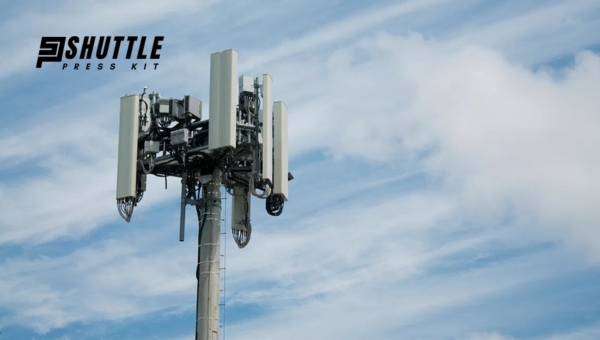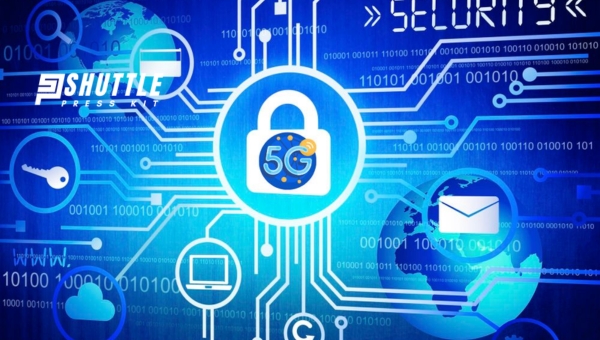I’ve heard the buzz and seen the headlines – “Is 5G really that scary?” Many folks are chatting about it, saying how they fear the power of this new tech. They whisper about sickness, spying eyes, and worse. It’s like a tale straight out of a spooky movie, right? But wait! Have we gotten all twisted up over nothing?
To cut to the chase: no solid proof shows that 5G is a big scare for us. The experts have been at it, testing and looking at all kinds of studies. What they found is pretty clear – while 5G rolls out faster than lightning, it ain’t bringing harm or danger to our doorstep as some stories suggest. It’s all about staying in safe limits set by the people who know this stuff inside out.
Health Implications of 5G Technology
The advent of 5G technology promises revolutionary speed and connectivity, but it has also sparked discussions about potential health impacts. 5G employs higher frequency electromagnetic fields (EMFs) than its predecessors, leading to inquiries about its safety. Here are some key findings about health concerns associated with 5G:

- Tissue Heating: Studies indicate that mobile phones using frequencies between 1.8 to 2.2 GHz can lead to tissue heating due to the absorption of electromagnetic energy by the skin, causing a slight increase in temperature in both the brain and body.
- Age-related Absorption: Research from 2021 reveals older individuals may experience more EMF-related tissue heating as they often have reduced skin thickness and blood flow, absorbing higher levels of EMFs.
- Cognitive Effects: The impact of 5G on cognitive function remains under-researched. However, there’s evidence from studies on different EMF sources suggesting extensive mobile phone use (over 90 minutes a day) could be linked to attention difficulties.
- Cancer Risk: The International Agency for Research on Cancer (IARC) labeled EMFs as “possibly carcinogenic” in humans back in 2011. While most research has focused on links between EMFs and brain cancer—with inconsistent results—there’s no conclusive evidence so far regarding a direct link between cancer and exposure specifically to the frequencies used by 5G.
The above pointers suggest that while there are certain potentially associated risks like tissue heating and inconclusive data on cognitive effects or cancer linkage, further research is essential for understanding how specific exposures related to the frequencies used by 5G technology may affect human health.
Also Read: Starlink Dimensions Simplified: Nail Your Satellite Setup
Effects of 5G Radiation on Animals
With the global rollout of 5G technology, concerns have been raised regarding its potential effects on wildlife and animals. Unlike previous generations of mobile networks, 5G operates using higher frequency waves to provide faster internet speeds and more reliable connections. This has led to increased discussions around the impact these frequencies might have on living organisms:

- Limited Existing Research: Studies specifically targeting the impact of 5G frequencies on animals are currently limited. Much of the existing research focuses on earlier generations of mobile communication technologies or general electromagnetic field (EMF) exposures.
- Animal Study Findings: Research involving rodents, such as mice and rats, suggests a potential link between EMF exposure from mobile phones and DNA damage or adverse effects on the nervous system. However, these findings cannot be directly extrapolated to imply similar outcomes from 5G exposure due to frequency band differences.
- Investigations into Various Species: A review conducted in 2020 explored how electromagnetic fields might affect different organisms including snails and frogs. The conclusions were inconclusive regarding EMFs posing negative effects on these animals, indicating a need for further targeted research into various species and specific frequency exposures associated with 5G.
- Myth Busting Efforts Required: Misinformation around 5G’s impact not only concerns human health but also extends into wildlife territories with unwarranted claims circulating across social media platforms. There is a need for continuous myth-busting efforts backed by scientific evidence to address these claims.
As technology advances rapidly, ongoing research is essential to thoroughly understand how newer technologies like 5G may influence animal welfare and ecosystems at large.
Also Read: How to Disable the Starlink Antenna Motors? – User Guide
5G Network Security and Privacy Concerns
The integration of 5G technology brings advancements in speed and connectivity but also raises questions about user privacy and data security. Unlike previous generations, 5G networks involve a larger number of antennas and nodes to ensure widespread coverage, potentially increasing the risk of location tracking and foreign espionage.

Here are the key points addressing these concerns:
- Enhanced Location Tracking Capabilities: The dense deployment of 5G infrastructure can theoretically allow for more precise location tracking of users due to the network’s necessity for closer proximity to devices.
- Foreign Equipment Risks: The global nature of telecommunications equipment supply chains has prompted fears that sensitive user data could be exposed through infrastructure components manufactured by companies with close ties to foreign governments.
To mitigate these risks, consider the following proactive steps:
- Disable Location Services: When not needed, turn off location services on your device. While this action doesn’t completely prevent tracking, it minimizes the amount of location data shared with applications and services.
- Stay Informed About Your Provider’s Infrastructure Partnerships: Be aware of which companies supply your network provider’s equipment. In cases where providers use equipment from manufacturers known for potential security vulnerabilities or ties to governments with questionable privacy practices, consider advocating for change or switching providers.
- Use Encrypted Communication Apps: To safeguard against potential eavesdropping on your communications over 5G networks, prioritize using messaging and calling apps that offer end-to-end encryption.
- Regularly Update Your Devices: Ensure that your mobile devices are always running the latest firmware and software updates provided by manufacturers. These often contain patches for newly discovered security vulnerabilities.
Also Read: Guide to Stow Your Starlink: The Art of Satellite Setup
Frequently Asked Questions
Is 5G harmful to my health?
Research to date shows no conclusive evidence that 5G technology poses significant health risks to humans when regulations on exposure are followed.
Will 5G technology increase cancer risk?
There’s no reliable scientific data linking 5G technology directly to increased cancer risk, according to health and regulatory bodies.
Can 5G interfere with weather forecasts?
Concerns exist about potential interference with weather satellites, but efforts are ongoing to mitigate any impact on weather predictions.
Does 5G exposure affect animals or the environment?
Current studies indicate minimal impact on animals and the environment, but more research is needed to fully understand long-term effects.
Conclusion
The concerns about 5G technology and its impact on health have been a topic of much debate and research. As of now, the majority of scientific studies have not found evidence that 5G technology is harmful to human health at the levels used for mobile communications. Regulatory bodies around the world, including the World Health Organization and the International Commission on Non-Ionizing Radiation Protection, continue to monitor and study the technology to ensure public safety.
It is crucial to rely on peer-reviewed scientific research and expert guidance when evaluating the potential risks associated with 5G technology. As with any new technology, ongoing research and monitoring are essential to fully understand its implications on health and the environment.
